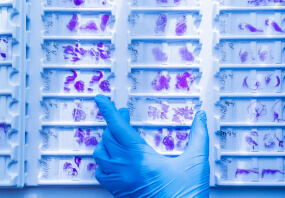Description
General description
Liberase TM Research Grade contains highly purified Collagenase I and Collagenase II. These two collagenase isoforms are blended in a precise ratio to each other, and with a medium concentration of Thermolysin, a non-clostridial neutral protease.
Application
Liberase™(Thermolysin Medium) Research Grade is used for the dissociation of a broad range of tissue types, where high purity of the enzyme blend is necessary for high cell yield and viability.[1][2][3] Bacterial by-products, such as endotoxins, are reduced up to several thousand-fold.
Features and Benefits
Maximize viability and yield of isolated cells: with an enzyme blend that has less clostripain and trypsin activity, as well as reduced endotoxin content.
Count on higher specific activity of the enzyme blend: as a result of higher Collagenase I + II purity (determined by HPLC analysis).
Obtain higher experimental reproducibility: due to higher lot-to-lot consistency.
Increase safety: with an enzyme that is free of any mammalian or avian tissue-derived raw materials.
Preparation Note
Stabilizers: Calcium
Working concentration: Liberase Research Grade Enzyme Working Concentration
Liberase enzymes have significantly higher specific activities than traditional collagenases. This means that the working concentration of Liberase Research Grade Purified Enzymes, expressed in mg/ml, will be lower than that of traditional collagenase.
When the application is not included on this list, first use Liberase TM Research Grade at a concentration of 0.08–0.28 Wünsch units/ml.The goal is to determine the best starting concentration of Liberase Research Grade Enzyme Blends. This is a starting point, and the final concentration may vary due to differences in procedure and lot-to-lot differences in traditional collagenase.
Collagenase Working Concentration
Multiply your previous collagenase working concentration (mg/ml) by its specific activity (Wünsch units/mg, [as determined above]), to obtain Wünsch units/ml. To determine how much Liberase Research Grade Enzyme Blend to use, first multiply your collagenase working concentration (in Wünsch units/ml) times the total volume of your working enzyme solution to obtain the total collagenase activity needed (Wünsch units). Divide the total collagenase activity required by the Liberase Research Grade stock concentration ( “Reconstitution and Storage”). This indicates how many milliliters of Liberase Research Grade Enzyme Blend stock solution to use in your working enzyme solution.
Storage conditions (working solution): Store unused stock solution in single-use aliquots at -15 to -25 °C.
Note: Avoid repeated freezing and thawing!
Reconstitution
Reconstitute the lyophilized enzyme with injection-quality sterile water or tissue-dissociation buffer. Do not add serum or other components, such as albumin or protease inhibitors, to the dissociation buffer. Enzyme stability is reduced at higher concentrations and warmer temperatures (4 °C). Avoid both the above conditions.
Reconstitute the entire vial. Do not weigh individual aliquots of the lyophilizate. The introduction of moisture into the vial results in a decline in enzymatic activity.
Place vial on ice to rehydrate the lyophilized enzyme.
Gently agitate the vial at 2 to 8 °C until enzyme is completely dissolved (max. 30 min).
Depending on the type of tissue-dissociation buffer used to dissolve Liberase Research Grade Purified Enzyme Blends, slight precipitations may be observed which readily dissolve in the dilutedworking solution, and have no influence on enzyme activity.
Remove an aliquot of the stock solution to prepare the working solution.
Reconstitution volume
2 ml (1 vial with 5 mg–10 mg pack size), 10 ml (1 vial with 50 mg–100 mg pack size)
Collagenase Wünsch (units/ml)
13 (1 vial with 5 mg–10 mg pack size), 26 (1 vial with 50 mg–100 mg pack size)
Total Collagenase concentration [mg/ml]
2.5 (1 vial with 5 mg–10 mg pack size), 5.0 (1 vial with 50 mg–100 mg pack size)
Storage and Stability
Keep container tightly closed in a dry and well-ventilated place.
Other Notes
For life science research only. Not for use in diagnostic procedures.
Legal Information
Liberase is a trademark of Roche
- UPC:
- 51281514
- Condition:
- New
- Availability:
- 3-5 Days
- Weight:
- 1.00 Ounces
- HazmatClass:
- No
- MPN:
- 5401127001












